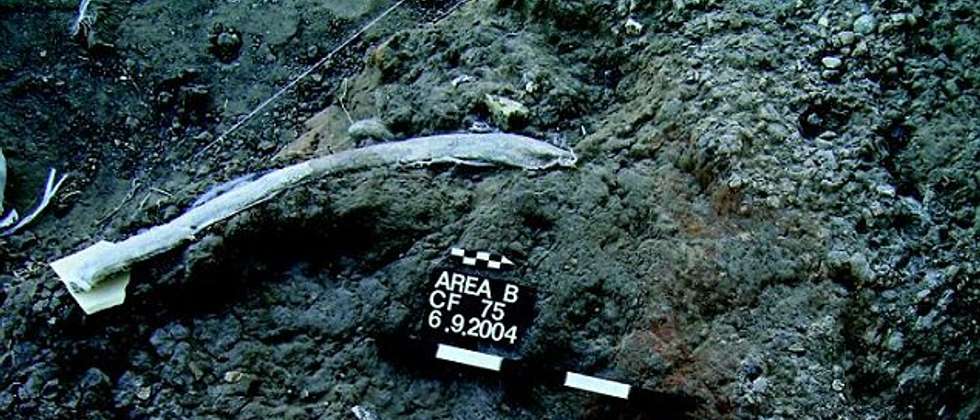Researchers in Israel find pre-historic tools containing residue of animal fat which helped archeologists see how animals 100,000 years ago were butchered for food.
By i24news
New research by Tel Aviv University professors determined that pre-historic tools from approximately 100,000 years ago were used to kill and butcher animals.

Researchers analysing elephant remains (rib pictured) in Israel have discovered signs of animal residue on primitive tools called ‘handaxes and scrapers’ alongside cut marks in the remains themselves. – Photo: Ran Barkai
The team found elephant bones in a quarry near Jerusalem; a close analysis, called the “use-wear analysis”, of the cut marks on the bones showed that the animal was butchered
by axes and scrapers made of flint.
The team was made of Professor Ran Barkai, Natasha Solodenko, and Andrea Zupanchich
from Tel Aviv University’s Department of Archeology and Ancient Near Eastern Cultures.
The flint tools found contained residue of animal fat and vegetables. This allowed the researchers to determine for the first time proof of an animal being butchered using tools.
Barkai, commenting on the significance of the finding, told the Daily Mail, “There are three parts to this puzzle: the expansion of the human brain, the shift to meat consumption, and the ability to develop sophisticated technology to meet the new biological demands.”
“The invention of stone technology was a major breakthrough in human evolution,” Barkai continued. “At the Revadim quarry we found butchered animal remains, including an
elephant rib bone which had been neatly cut by a stone tool, alongside flint handaxes and scrapers still retaining animal fat. It became clear from further analyses that butchering and carcass processing indeed took place at this site.”
The researchers have suggested that the tools were used to make hides, a process which involves separating the skin and fur of the animal from the meat.
“The knowledge of how to make these tools was precious, and must have been passed
along from generation to generation, because these tools were reproduced the same way across great territorial expanses and over hundreds of thousands of years,” said Barkai.
He refers to this finding as one connects other pieces together in a “thousand-piece
puzzle.”
View original i24news publication at: http://www.i24news.tv/en/news/culture/65075-150321-tau-researchers-find-early-sign-of-pre-historic-butchery







 Israeli New Shekel Exchange Rate
Israeli New Shekel Exchange Rate